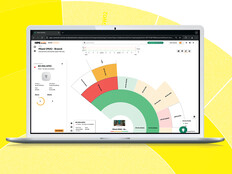SDNs Emerge To Drive Efficiencies in Local Governments
Software-defined network architectures are moving from theory to implementation, and they’re popping up as a way for states and localities to run more efficient IT operations in the face of shrinking budgets.
Just a few years ago, with SDNs on the bleeding edge of tech, the architecture promised to offer a way for budget-strapped government IT departments to reduce costs as they cut back on manual tasks and equipment, while providing greater network agility and more centralized management.
Experts were also confident that the technology could go even further, allowing IT departments to set up networks as centers of innovation and potentially creating a market for network applications the way Apple and Google did for iOS and Android smartphones.
Benefiting the Budget and the Community
While many local governments are still feeling their way around SDN services, several have seen this kind of success in the past few years as the systems allow IT departments to run less expensive and more agile networks.
The National Security Telecommunications Advisory Committee also recently spotlighted SDNs ability to separate applications from network devices as a way to boost cybersecurity, FCW reports. But perhaps more prevalent is the way that SDNs allow state and local governments to maximize operations with a shoestring staff.
In Durham County, N.C., the government recently deployed Cisco’s Application Centric Infrastructure (ACI), the vendor’s SDN, as part of a long-range plan to “create a highly efficient and automated application-centric data center,” according to a Cisco press release.
“Cisco ACI is an easy-to-use network automation for SDN environments. Its Application Policy Infrastructure Controller (APIC) serves as the holistic manager for all ACI fabric and has an intuitive GUI [graphical user interface] and a [Representational State Transfer] RESTful API, through which network administrators can build configuration policies on a per-VLAN [virtual local area network] or per-app basis. APIC dynamically establishes policies on the physical infrastructure when an app is identified,” Ryan Tischer, a technical services architect at Cisco Systems, explained to StateTech.
With an aim to allow all of Durham’s applications and services to run at peak performance, Cisco will migrate the data services to the ACI network, breathing greater flexibility into the network fabric.
With the SDN, Durham County CIO Greg Marrow says the county is looking to streamline government operations, conserve energy and improve data security.
Durham County will add ACI extensions to its dark fiber ring in downtown Durham as part of the deployment. Meanwhile, with the aim to provide capabilities at other county sites, network engineers will install ACI remote leaf switches, creating a 40Gb fiber ring downtown. The extended dark fiber ring will lay the foundation for smart city services, including a video surveillance system, enhanced library network access and services, and the opportunity to create more services to better meet the needs of residents and businesses in Durham County.
“Right now, we spend 80 percent of our time and resources maintaining the network, and 20 percent on new projects or improving services and innovation,” said Joel Bonestell, Durham County’s network services manager. “Moving forward, we will be able to flip that around and have more time for new and innovative projects that will benefit our residents and businesses with new capabilities and services.”









